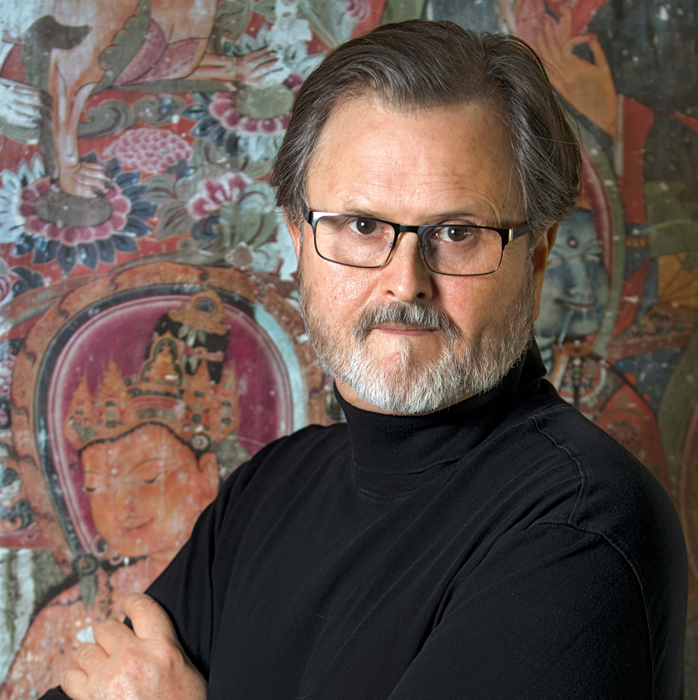 |
Thomas Laird... journalist. The Story of Tibet: Conversations with the Dalai Lama is the result of 60 hours of intense conversation between this veteran journalist and His Holiness the Dalai Lama, the spiritual and temporal leader of Tibet. The remarkable Mr. Laird was based in Katmandu for thirty years, was Nepal correspondent for Asiaweek for a decade and a regular contributor to Time and Newsweek. The author of three additional books, Mr. Laird’s photography has appeared in two books and more than fifty magazines. He now divides his time between Kathmandu and New Orleans. |
a History of Tibet
The hard political difference between Tibet and the Chinese about their history was a major reason His Holiness the Dalai Lama spent 60 hours over several years in conversation with Thomas Laird, and why Mr. Laird spent 10 years writing The Story of Tibet: Conversations with the Dalai Lama. Since 1912, Chinese governments have been telling the Chinese people that Tibet has been part of China since the Great Chinese (sic) Emperor Genghis Khan unified the nation in the 13th century.
Mr. Laird’s additional, extensive research does a great deal more than reassure us that Genghis Khan really was as Mongol as was his Mongolian Empire, the greatest one the planet has ever known. Mr. Laird also makes sense of today’s powerful Chinese nationalism, rooted centuries of being subjugated and humiliated by a series of foreign rulers. Forget communism, Mr. Laird urges, that's not even interesting any more. If the U.S. is to avoid a war with China in the next 20 years, foreign policy makers must appreciate history -- China’s as well as Tibet’s. The story now he says is: What is a powerful successful nationalist state going to do with its abilities in the world?
Like Tibet’s history itself, there is an unrelenting tension between the spiritual and the temporal in The Story of Tibet. As he came to understand and admire the Dalai Lama’s holistic view of history, Mr. Laird was amazed to find how similar it was to his own geopolitical perspective about nomads and farmers, based on Owen Lattimore’s pivotal insight -- you cannot understand the history of Asia unless you understand the great divide between farmers and nomads. (Hint: Urban civilization is all a farmer society -- the only time the nomads have ever dramatically sprung onto the world stage was when those aforementioned Mongols devastated all the agrarians societies -- but the ongoing struggles between the two have made history.)
One can only marvel at how little Westerners know about Tibet. It’s the size of Western Europe and 40% of China’s landmass. The water from all of China’s great rivers comes off the Tibetan plateau. The resources of the Plateau and its strategic importance cannot be underestimated and Mr. Laird’s personal opinion is that China will do anything to retain it.
But shining through this book about Tibet is His Holiness the Dalai Lama. And he is the man whom the world has come to know . Tibet’s history? In many ways it is like any other -- greed, anger, ignorance, lust, and pride are problems. The difference is, where others would blame, the Dalai Lama takes responsibility, Mr. Laird says. Whenever he got excited about the politics or something else, Mr. Laird says the Dalai Lama always very calmly reverted back to what he brings to the world stage -- his approach to all problems through wisdom and compassion and human kindness.
War is like dinosaurs, says the Dalai Lama, it’s something that should be dying off. If humans have a future, he tells us, it depends on us learning to work together. The wisdom we need to solve the world’s problems is inherent in each of us. What’s left? The willingness to put caring for other people first -- farmers and nomads alike.
[This Program was recorded January 24, 2007, in Atlanta, Georgia,]








